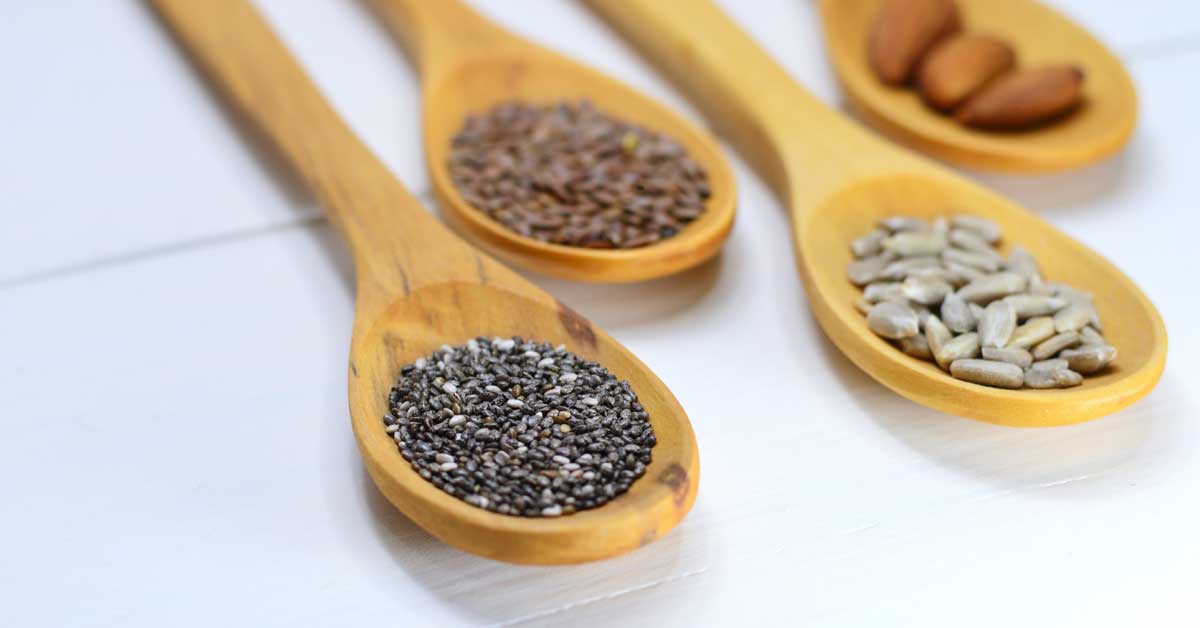The Mediterranean diet is recognized as a great blueprint for heart-healthy living. With its high quantities of fruits, vegetables, whole grains, beans, nuts, and (most importantly here) seeds. We all know fruits and vegetables are crucial to a healthy lifestyle, but for those not ready to undertake a massive diet change, progressively adding elements of a Mediterranean diet is a great way to start.
Many Americans are not already eating seeds, but you may be surprised to find their benefits and how easy it is to add them to your diet.
Benefits of Seeds
Fiber, iron, calcium, magnesium, phosphorus, and healthy fats are among the main health benefits of seeds. This can aid in reducing blood sugar, cholesterol, and blood pressure.
Iron in particular plays an important role in carrying oxygen-rich blood through your body with a deficiency in iron causing several health concerns (among them is hair loss).
How are Seeds Different than Nuts?
The UK’s Woodland Trust states that a “nut” can also be a “seed.” However, a “seed” cannot be classified as a nut. If this is confusing, it probably helps speak to the overall similarities between the two.
Both are great but favor different health benefits. Seeds are a better choice for fiber and protein. Nuts have a higher amount of healthy fat. Of course, each type of seed varies in nutritional content, with chia and flaxseeds being leaders for fiber, and pumpkin and watermelon seeds leading in protein.
Types of Seeds
Flaxseeds – If you are interested in reducing your blood pressure, flaxseeds may be a great addition to your diet.
Chia seeds – Helpful in reducing blood sugar, and potentially appetite as well, chia seeds are considered a heart-healthy choice. If you have diabetes or are pre-diabetic, consider asking your provider if chia seeds could be a helpful addition to your diet.
Sesame seeds –Commonly eaten in Asia, sesame seeds are a primary dietary source of lignans, which are a fiber-associated compound. While lignans are present in other grains and vegetables, sesame seeds remain among one of the best fiber sources with 3.3 grams of fiber per ounce.
Pumpkin seeds – Known as a good source of manganese, magnesium, and phosphorus, all of which many US adults are not consuming enough of. It’s reported nearly 80% of US adults are not consuming enough magnesium, which is important for bone formation and density as well as for regulating blood pressure and blood sugar.
Sunflower seeds – The most common seed on this list and one so popular you could probably buy a bag even at a gas station. If you buy them in a bag like this, be cautious of the salt content as, like nuts, there can tend to be a lot of added salt. Beyond that though, sunflower seeds contain vitamin E which is beneficial in decreasing inflammation.
How to Add Seeds to Your Diet
Many seeds are small enough to simply be sprinkled into your yogurt, smoothies, or even baked goods. Chia seeds are most commonly used in this way as they are relatively tasteless to the point you may forget they are even mixed in. Larger seeds (like pumpkin or sunflower seeds) can be mixed in too, but be mindful that these seeds may appear more prominently.
Besides simple mix-ins to existing recipes, there are plenty of recipes for specific seeds – like pumpkin seeds, which we covered previously.


